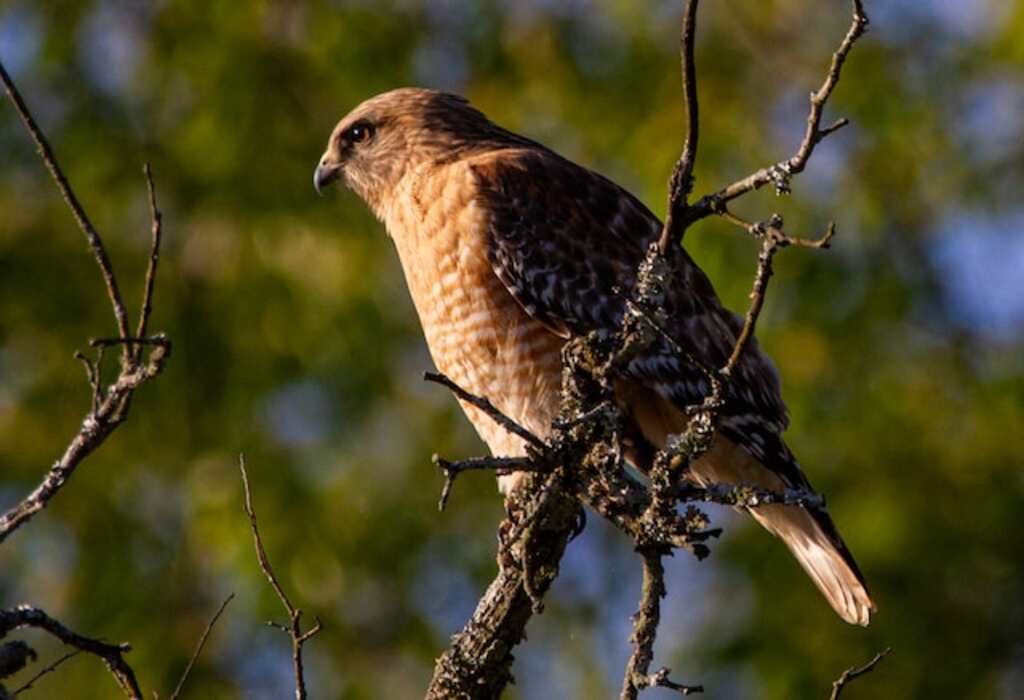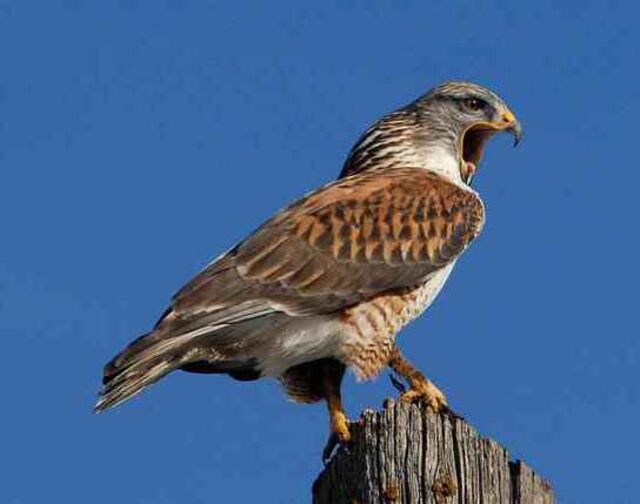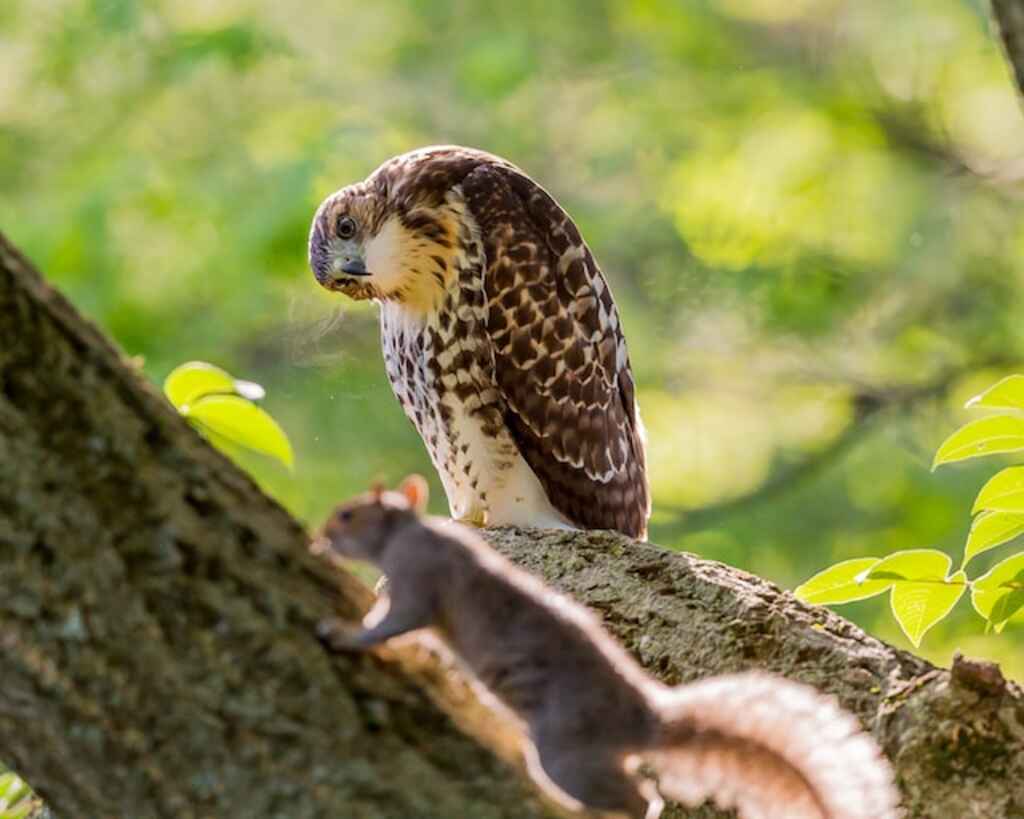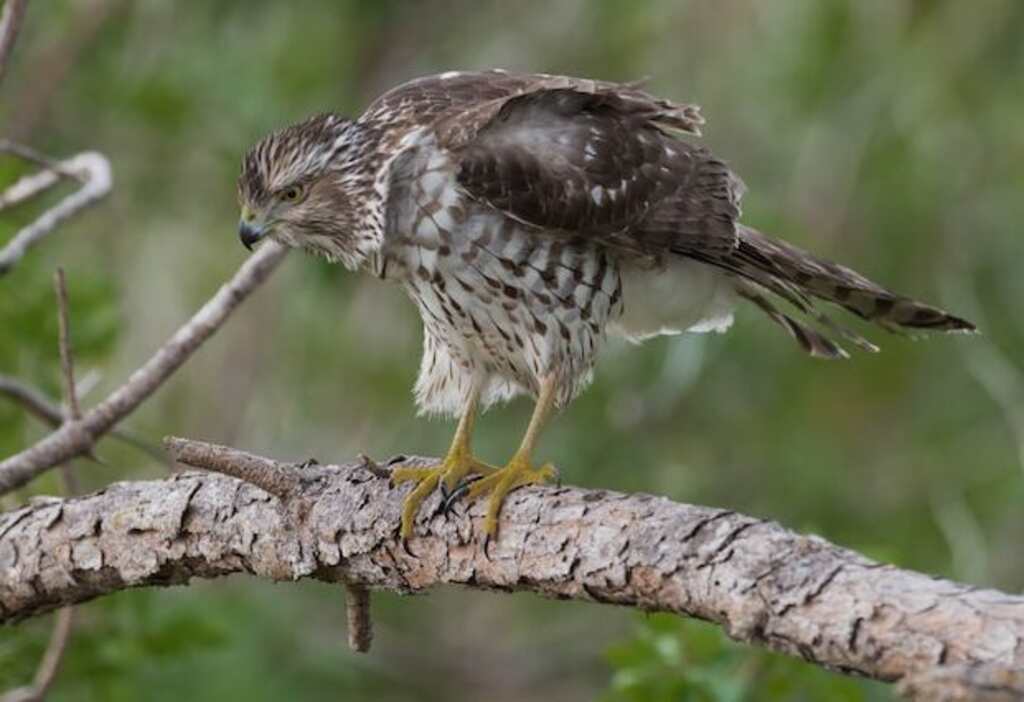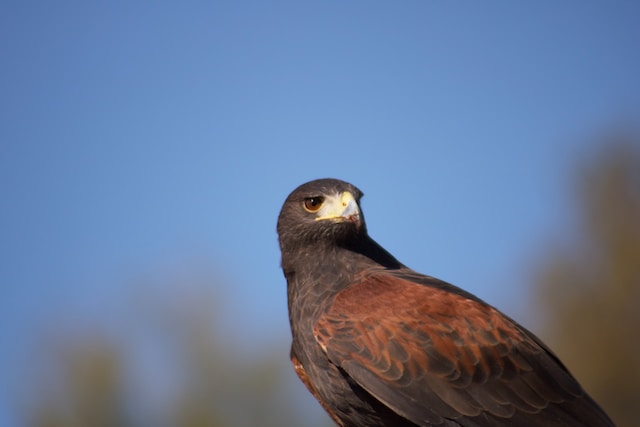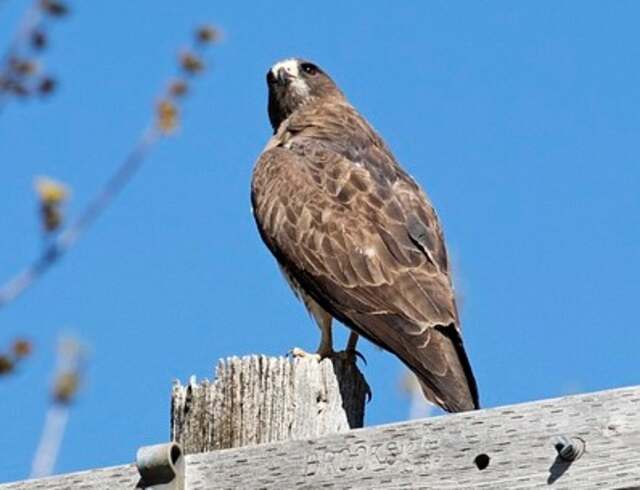Hawks are majestic birds of prey that have fascinated humans for centuries. They are known for their sharp talons and beaks, which they use to hunt and kill their prey.
However, there is a common misconception that hawks are harmless creatures that do not pose a threat to humans. This theory has been debunked, and it is important to understand the truth behind it.
In this article, we will explore the question, ‘Do hawks bite?’ We will delve into the behavior of hawks as wild animals and examine the rare occurrences of hawk bites.
We will also look at the reasons why hawks might bite and the types of hawks that are more likely to exhibit this behavior.
Additionally, we will discuss the signs of a hawk feeling threatened and the prevention methods that can be employed to avoid hawk bites.
Finally, we will explore what to do if bitten by a hawk and the medical treatment for hawk bites.
By the end of this article, readers will have a better understanding of hawks as wild animals and the potential risks they pose to humans.
Table of Contents
- 1 Key Takeaways
- 2 Do Hawks Bite?
- 3 Understanding Hawks as Wild Animals
- 4 Rare Occurrences of Hawk Bites
- 5 Reasons Why Hawks Might Bite
- 6 Types of Hawks That Might Bite
- 7 Signs of a Hawk Feeling Threatened
- 8 Prevention Methods
- 9 What to Do If Bitten by a Hawk
- 10 Medical Treatment for Hawk Bites
- 11 Conclusion and Final Thoughts
- 12 Frequently Asked Questions
- 13 Author
Key Takeaways
- Hawks may bite if they feel threatened or if their nest is disturbed.
- Hawk bites can be dangerous due to the bacteria and germs present in their beak and talons.
- Precautions such as avoiding nesting sites and keeping small pets on a leash can minimize the risk of a hawk attack.
- Seeking medical attention immediately after a hawk bite is essential to prevent potential infections and ensure proper treatment.
Do Hawks Bite?
Yes, hawks are capable of biting, but it is not their primary mode of attack. Hawks have sharp, curved beaks designed for tearing and grasping prey.
While they may bite when threatened or defending their nest, their beak is primarily used for capturing and dismembering prey rather than biting as a means of aggression.
Understanding Hawks as Wild Animals
The behavior and characteristics of hawks as wild animals can provide insight into their potential to bite. Hawks are predatory birds that are known for their sharp beaks and talons, which they use to catch and kill their prey.
They tend to be solitary animals that are highly territorial and fiercely protective of their nests.
Hawks are also known for their keen eyesight, which allows them to detect prey from great distances.
They are typically found in natural habitats such as forests, grasslands, and wetlands, where they hunt for small animals such as rodents, birds, and insects.
While hawks are not generally aggressive towards humans, they may attack if they feel threatened or if their nest is disturbed.
Understanding these natural behaviors and habitats can help us to avoid rare occurrences of hawk bites.
Rare Occurrences of Hawk Bites
Instances of hawk attacks on humans are infrequent, with recorded cases being exceptionally rare. However, it is important to understand how to handle hawk attacks in the event that one does occur.
To help you better understand how to handle hawk bites, here are four important points to keep in mind:
1) Do not attempt to remove the hawk’s talons or beak from your skin, as this may cause further damage.
2) Remain as calm and still as possible to avoid agitating the hawk further.
3) Seek medical attention immediately after the attack to prevent infection.
4) Understand that hawks are wild animals and their behavior can be unpredictable, so it is important to avoid provoking or approaching them in the wild.
With these tips in mind, it is possible to minimize the risk of hawk bite incidents.
In the next section, we will explore the reasons why hawks might bite.
Reasons Why Hawks Might Bite
It is noteworthy to examine the factors that contribute to hawk aggression towards humans.
While hawks are generally non-aggressive towards humans, there are instances where they may bite.
Some possible causes of hawk aggression include human interaction, such as feeding or attempting to handle them, as well as territorial disputes or protecting their young.
It’s important to note that these incidents are rare and often preventable through proper education and awareness.
Understanding the reasons why hawks might bite can help individuals avoid any potential conflicts and ensure the safety of both humans and hawks.
In the next section, we will delve into the types of hawks that might bite and how to identify them.
Types of Hawks That Might Bite
Identifying the specific hawk species that are more prone to biting can aid in preventing potential conflicts between humans and these birds of prey.
Hawks are generally not aggressive towards humans, but certain species may display defensive behavior if they feel threatened.
For example, the red-tailed hawk is known to be more territorial and may attack if it feels its nest or young are in danger.
Similarly, the sharp-shinned hawk is known to be more aggressive during its breeding season.
It is important to take precautionary measures when encountering hawks and their behavior, such as giving them space and avoiding sudden movements.
Understanding the behavior of different hawk species can help prevent potential conflicts and promote coexistence. In the subsequent section, we will discuss signs of a hawk feeling threatened.
Signs of a Hawk Feeling Threatened
Observing changes in a hawk’s body language and vocalizations can indicate when the bird may be feeling threatened.
When a hawk feels threatened, it may exhibit warning signs such as puffing up its feathers, lowering its head, or opening its wings to appear larger.
Additionally, it may emit vocalizations such as screeching or hissing to warn off potential predators or threats.
These behaviors are important to pay attention to as they can signal an impending attack or bite.
By understanding these warning signs, individuals can take preventative measures to avoid being bitten by a hawk. In the next section, we will discuss some methods to prevent hawk attacks.
Prevention Methods
Prevention methods are essential in ensuring that hawk attacks are avoided.
One of the critical measures is keeping a safe distance from the hawks.
Avoiding eye contact with the birds is another effective way of preventing hawk attacks.
Wearing protective clothing, such as hats and gloves, can also reduce the risk of being attacked by a hawk.
Keeping a Safe Distance
Maintaining a safe distance from hawks is crucial in preventing potential bites, as these birds of prey can attack if they feel threatened or provoked.
Observing their behavior is important in determining whether they feel threatened, such as if they are making warning calls or displaying aggressive behavior.
It is recommended to keep a distance of at least 100 yards from nesting hawks, and for non-nesting hawks, a distance of at least 50 yards is recommended.
To help visualize this distance, imagine a football field with the hawk at one end and you at the other.
It is important to note that this distance should also be maintained when observing hawks with binoculars or cameras.
By keeping a safe distance, the risk of being bitten by a hawk can be greatly reduced.
As we move on to the next section, it is important to remember that avoiding eye contact is another crucial step in preventing hawk attacks.
Avoiding Eye Contact
One effective way to deter potential attacks from hawks is to avert one’s gaze and avoid direct eye contact with the bird of prey.
This strategy is based on the notion that hawks perceive eye contact as a threat and may interpret it as a sign of aggression.
Avoiding eye contact can also help prevent the hawk from fixating on a person, which could lead to an attack.
Body language signals can also be used to communicate non-threatening intentions to the hawk. This includes standing tall, keeping one’s arms and legs close to the body, and avoiding sudden movements.
By utilizing these techniques, individuals can minimize the risk of being attacked by a hawk.
However, it is important to note that avoiding eye contact and using body language signals does not guarantee safety, and other precautions such as wearing protective clothing may also be necessary.
Wearing Protective Clothing
While avoiding eye contact is an important safety measure, wearing protective clothing can also be beneficial in preventing hawk bites. Protective clothing can include gloves, long sleeves, and hats.
It is important to note that hawks are powerful birds with sharp talons and beaks, so it is crucial to protect oneself when handling them or being in their proximity.
To further emphasize the importance of protective clothing, a table can be incorporated to showcase the different types of protective gear and their corresponding uses.
By taking these safety measures, individuals can reduce the likelihood of being bitten by a hawk and ensure that they are able to handle these birds safely.
In the next section, we will discuss what steps to take if bitten by a hawk.
What to Do If Bitten by a Hawk
In the event of a hawk bite, it is crucial to seek medical attention immediately to prevent infection and ensure proper treatment.
First aid should be administered, including cleaning the wound with soap and water and applying an antibiotic ointment.
However, it is important to note that a hawk bite can be dangerous due to the bacteria and germs present in the hawk’s beak and talons.
If left untreated, it can lead to serious infections such as tetanus or sepsis.
Seeking medical attention is essential to receive proper treatment and prevent any further complications.
It is important to remember that even if the bite does not seem severe, it is still necessary to seek medical attention to ensure that the wound is properly cleaned and treated.
Medical treatment for hawk bites may involve antibiotics or a tetanus shot.
It is always better to err on the side of caution when it comes to hawk bites, as the consequences of not seeking proper medical attention can be severe.
Medical Treatment for Hawk Bites
Medical intervention for hawk bites typically involves administering antibiotics or tetanus shots to prevent potential infections and ensure proper treatment.
Prompt medical attention is crucial to prevent the spread of disease and promote the healing process.
Treatment options depend on the severity of the bite, with minor wounds typically requiring cleaning and bandaging, while more severe bites may require surgical intervention.
In addition to antibiotics and tetanus shots, pain medication may also be prescribed to alleviate discomfort.
It is important to monitor the wound closely and follow up with a healthcare provider to ensure proper healing.
In conclusion, seeking medical attention immediately after a hawk bite is essential to prevent potential infections and ensure proper treatment.
Conclusion and Final Thoughts
Overall, seeking prompt medical attention and closely monitoring the wound are crucial steps in ensuring proper healing and preventing potential complications after a hawk attack.
While hawk attacks are rare, they can occur in urban areas where hawks have adapted to living in close proximity to humans.
The prevalence of hawk bites is not well-documented, but it is important to take precautions when in areas where hawks are known to frequent.
It is also important to understand hawk behavior, such as their territorial nature and the fact that they may view humans as potential threats to their nesting sites.
By being aware of these behaviors and taking necessary precautions, such as avoiding nesting sites and keeping small pets on a leash, the risk of a hawk attack can be minimized.
In the event of a hawk bite, seeking medical attention and following proper wound care procedures can ensure a full and speedy recovery.
Frequently Asked Questions
Can hawks be kept as pets?
It is illegal to keep hawks as pets in the United States without proper licenses and permits. Raising hawks requires specialized knowledge and facilities. Legal regulations exist to protect both the birds and the public.
What is the lifespan of a hawk in the wild?
Hawks are magnificent birds of prey that evoke a sense of freedom in many people. The average lifespan of a hawk in the wild is around 10-15 years, and they have a varied diet that includes small mammals, birds, and insects.
What is the difference between a hawk and an eagle?
Hawks and eagles both belong to the Accipitridae family, but hawks are smaller in size and have shorter wingspans. They play an important role in the food chain, often preying on small rodents and birds. Understanding the differences between hawks and falcons can help distinguish between the two raptors.
Do hawks migrate during the winter?
Hawks are known for their winter habits, specifically their migration patterns. Many species of hawks migrate south during the winter months to find warmer temperatures and better food sources. This behavior is well-documented and observed by scientists.
How do hawks hunt for their prey?
Hawks utilize various hunting techniques and prey on a variety of animals, including rodents, birds, and reptiles. They use their keen senses, powerful talons, and sharp, curved beaks to capture and kill their prey, often swooping down from above or diving at high speeds.

